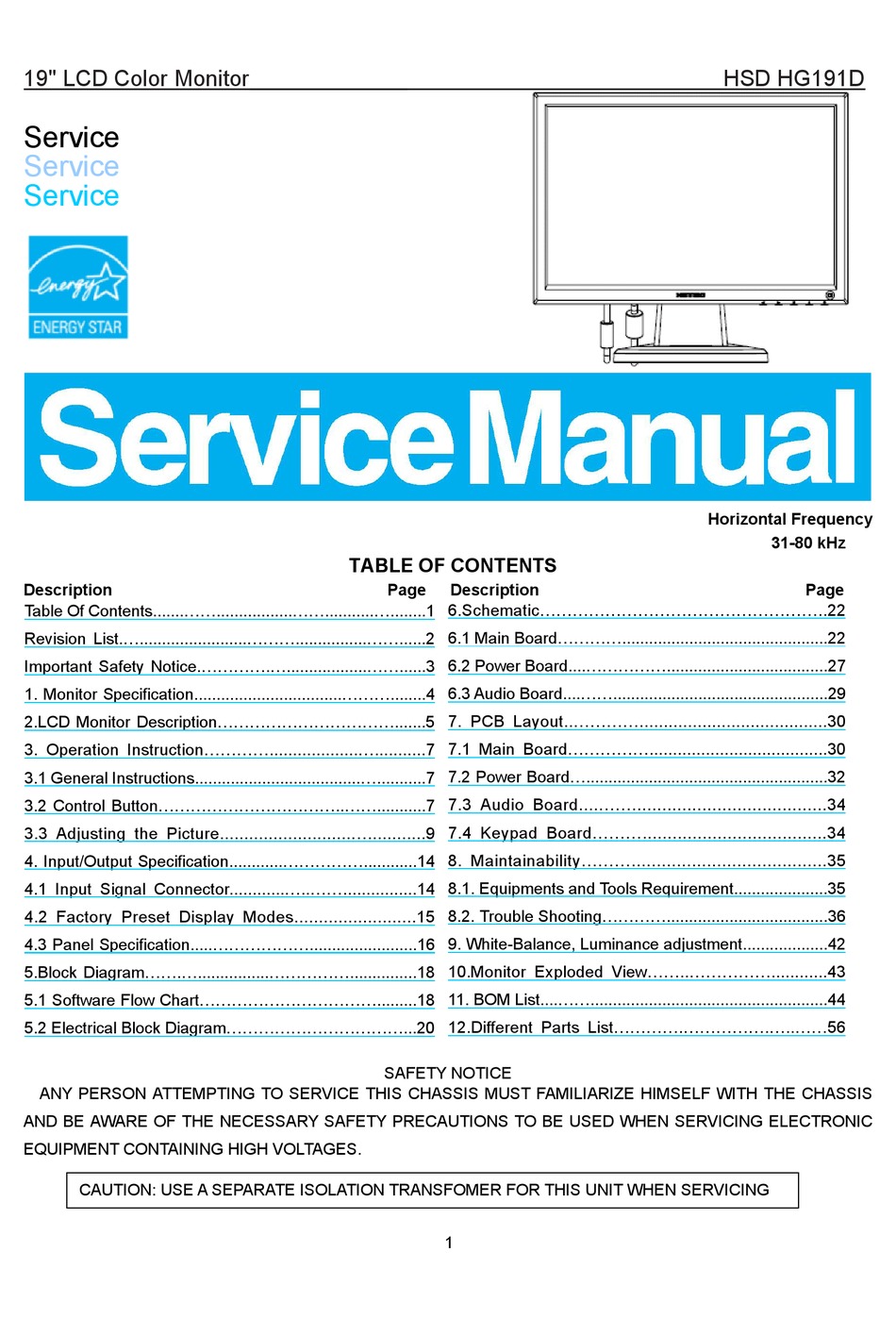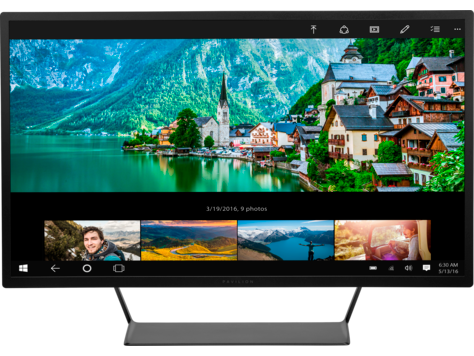Download HSD Monitors Driver
Windows Driver Downloads. Here you can download drivers for DisplayLink® USB graphics chipsets incorporated in your dock, adapter or monitor. We recommend to update to the latest driver to address any potential security issue, fix bugs, improve performance and add new features. Update the device driver. In the search box on the taskbar, enter device manager, then select Device Manager. Select a category to see names of devices, then right-click (or press and hold) the one you’d like to update. Select Search automatically for updated driver software. Select Update Driver. Placeholder content for popup link WordPress Download Manager - Best Download Management Plugin.
The latest versions of the software applications are available for download from this web site.
For instructions on how to install and use the software after downloading, refer to the User's Manual that came with the display.
Monitoring & Control
Content Management Software
Content Management Software Ver.3.3.1
(last update: 10 January, 2020)
Content Management Software Ver.1.1
(last update: 12 April, 2017)

Multi Monitoring & Control Software
Multi Monitoring & Control Software
(last update: 5 February, 2021)
FAQ for When the Software Cannot be Installed onto Windows® 8, Windows® 8.1 or Windows® 10
NOTE: Early Warning Software was integrated with Multi Monitoring and Control Software.
To activate the Early Warning function, please visit the PASS system.
More Information (Multi Monitoring and Control Software)
Control Software for Multi Window Processor
Control Software for Multi Window Processor (for Windows)
(last update:September, 2013)
Whiteboard Software
Whiteboard Software
Whiteboard Software for Windows
(last update: 28 February, 2020)
Whiteboard Software for Mac
(last update: 28 February, 2020)
Software for Previous Touch Panel Models
Pairing Tool Software
Pairing Tool
(last update: 18 September, 2013)
Electronic Pen USB Driver, Pairing Tool Software
(last update: 25 June, 2013)
Touch Panel Driver
Touch Panel Driver for Interactive Plasa Display
Touch Panel Driver for LCD Display
Touch Panel Driver for Touch Panel
Connection/Display
Wired LAN
Screen Transfer
Screen Transfer Ver.2.0
(last update: 30 November, 2020)
Screen Transfer Ver.1.0
(last update: 21 August, 2019)
Wireless LAN
Wireless Manager ME 6.4
Wireless Manager ME 6.4 for Windows
(last update: 22 December, 2017)
Wireless Manager ME 6.4 for Windows (Without Installation)
(last update: 22 December, 2017)
Wireless Manager ME 6.4 for Mac
(last update: 7 January, 2020)
Wireless Manager ME 6.4 FAQ
Wireless Manager ME 5.5
Wireless Manager ME 5.5g for Windows
(last update: April, 2012)
Wireless Manager ME 5.5g for Windows (Without Installation)
(last update: April, 2012)
Wireless Manager ME 5.5 for Mac
(last update: April, 2012)
Wireless Manager ME 5.5 FAQ
ET-UW100 Firmware Update Tool

ET-UW100 Firmware Update Tool for Windows
(last update: 22 September, 2017)
ET-UW100 Firmware Update Tool for Mac
(last update: 22 September, 2017)
Wireless Projector Apps
Wireless Projector for iOS
Wireless Projector for Android
Video Wall
Video Wall Manager
Video Wall Manager
(last update: 5 February, 2021)
Product Information
(Auto Display Adjustment Upgrade Kit :TY-VUK10)
* To download the Auto Display Adjustment Upgrade Kit: TY-VUK10, please visit PASS.
Download Hsd Monitors Driver Windows 7
-->With an INF file you can override the Extended Display Identification Data (EDID) of any monitor. A sample INF file, Monsamp.inf, that shows how to do this was provided with the Windows Driver Kit (WDK) through Windows 7 (WDK version 7600). Monsamp.inf is reproduced here.
For info on how to use and modify Monsamp.inf, see Monitor INF File Sections.

Approaches to correcting EDIDs
All monitors, analog or digital, must support EDID, which contains info such as the monitor identifier, manufacturer data, hardware identifier, timing info, and so on. This data is stored in the monitor’s EEPROM in a format that is specified by the Video Electronics Standards Association (VESA).
Monitors provide the EDID to Microsoft Windows components, display drivers, and some user-mode applications. For example, during initialization the monitor driver queries the Windows Display Driver Model (WDDM) driver for its brightness query interface and device driver interface (DDI) support, which is in the EDID. Incorrect or invalid EDID info on the monitor’s EEPROM can therefore lead to problems such as setting incorrect display modes.
There are two approaches to correcting EDIDs:
- The standard solution is to have the customer send the monitor back to the manufacturer, who reflashes the EEPROM with the correct EDID and returns the monitor to the customer.
- A better solution, described here, is for the manufacturer to implement an INF file that contains the correct EDID info, and have the customer download it to the computer that's connected to the monitor. Windows extracts the updated EDID info from the INF and provides it to components instead of the info from the EEPROM EDID, effectively overriding the EEPROM EDID.

In addition to replacing the EDID info as described here, a vendor can provide an override for the monitor name and the preferred display resolution. Such an override is frequently made available to customers through Windows Update or digital media in the shipping box. Such an override receives higher precedence than the EDID override mentioned here. Guidelines for achieving this can be found in Monitor INF File Sections.
EDID format
EDID data is formatted as one or more 128-byte blocks:
- EDID version 1.0 through 1.2 consists of a single block of data, per the VESA specification.
- With EDID version 1.3 or enhanced EDID (E-EDID), manufacturers can specify one or more extension blocks in addition to the primary block.
Each block is numbered, starting with 0 for the initial block. To update EDID info, the manufacturer’s INF specifies the number of the block to be updated and provides 128 bytes of EDID data to replace the original block. The monitor driver obtains the updated data for the corrected blocks from the registry and uses the EEPROM data for the remaining blocks.
Updating an EDID
To update an EDID by using an INF:
The monitor manufacturer implements an INF that contains the updated EDID info and downloads the file to the user’s computer. This can be done through Windows Update or by shipping a CD with the monitor.
The monitor class installer extracts the updated EDID info from the INF and stores the info as values under this registry key:
Each EDID override is stored under a separate key. For example:
The monitor driver checks the registry during initialization and uses any EDID info that's stored there instead of the corresponding info on EEPROM. EDID info that has been added to the registry always takes precedence over EEPROM EDID info.
Windows components and user-mode apps use the updated EDID info.
Overriding an EDID with an INF
To override an EDID, include an AddReg directive in the INF for each block that you want to override, in the following format:
The block number is a zero-indexed value of the EDID block to override. The data bytes should be formatted as 128 hexadecimal integers that contain the binary EDID data. The '0x1' value after the block number is a flag indicating that this registry value contains binary data (FLG_ADDREG_BINVALUETYPE).
Manufacturers must update only those EDID blocks that are incorrect. The system obtains the remaining blocks from EEPROM. The following example shows the relevant sections of an INF that updates EDID blocks 0, 4, and 5. The monitor driver obtains blocks 1 - 3 and any extension blocks that follow block 5 from EEPROM:
Download Hsd Monitors Driver Download
For more info on INFs in general, and AddReg and DDInstall in particular, see Creating an INF File.

